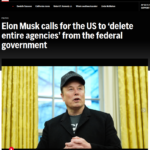California’s Oil and Gas industry may be on the verge of rapidly expanding unconventional oil and gas exploration, and because “unconventional” means fracking this immediately raises fears of earthquakes. On Thursday, Clean Water Action released a report (co-written with Earthworks and the Center for Biological Diversity), On Shaky Ground![]() , discussing the earthquake risks from fracking in California, and the lack of environmental oversight.
, discussing the earthquake risks from fracking in California, and the lack of environmental oversight.
Because of California’s geology, oil companies plan to use “acid fracturing,” otherwise known as “acidizing,” rather than hydraulic fracturing. The target is the Monterey Shale formation in central and southern California. Acid fracturing uses powerful acids, including hydroflouric acid, to melt the rock, and like hydraulic fracturing the idea is to release oil and gas that’s trapped inside rock.
It’s beginning to be recognized that fracking can induce earthquakes, and of course California is riddled with fault zones and is seismically active. A new article published in Mother Jones![]() going over the science of fracking induced earthquake swarms says the earthquakes do not come directly from fracking activities, but by disposal of the wastewater (called flowback or produced water) by injecting it underground. That, in turn, lubricates geologic faults and can induce earthquakes. Fracking produces enormously large quantities of wastewater, that’s heavily laden with toxic chemicals, and the normal practice is to return the flowback water underground through injection wells.
going over the science of fracking induced earthquake swarms says the earthquakes do not come directly from fracking activities, but by disposal of the wastewater (called flowback or produced water) by injecting it underground. That, in turn, lubricates geologic faults and can induce earthquakes. Fracking produces enormously large quantities of wastewater, that’s heavily laden with toxic chemicals, and the normal practice is to return the flowback water underground through injection wells.
Any Californian would immediately raise their hands and shout NO at the prospect of triggering an increase in earthquakes.
The Clean Water Action paper writes “An estimated 15 to 100 percent of fracking fluids return to the surface as wastewater. More than 75 percent of the chemical additives in fracking fluids can affect important organs, and 25 percent can cause cancer. Flowback and produced water are typically very saline and can contain heavy metals such as lead, organic contaminants such as benzene and toluene, and naturally occurring radioactive materials from deep in the formation, which makes treatment and recycling difficult.”
California has an estimated 2,583 wastewater injection wells, of which 1,553 are currently active. The oil and gas fields already operating in California produce billions of gallons of contaminated wastewater each year, or about 15 times more wastewater than oil, according to Clean Water Action.
The Monterey Shale, located in the San Joaquin Valley, Central Coast, and the Los Angeles basin, is thought to contain 13.7 billion barrels of technically recoverable shale oil. Fracking this shale formation would, assuming the 15:1 ratio of wastewater production, produce 8.6 trillion gallons (205.5 billion barrels) of wastewater.
According to Clean Water Action, and the Mother Jones article concurs, “In many areas of the U.S. where fracking has proliferated, earthquake activity has increased dramatically” and that “a growing number of studies have attributed some of this increased earthquake activity, and some of the largest earthquakes, to the underground injection of oil and gas wastewater in these regions.”
According to the Mother Jones article, it’s known that injected water will seep around through underwater fissures for several miles. That means injection wells don’t have to be located next to a fault to induce an earthquake in the fault.
Most damningly, more than half the 1,553 currently active wastewater injection wells in California are within 10 miles of a recently active fault. California has a lot of active faults. Of those, 42 are within 10 miles of a recently active fault that has produced an earthquake of magnitude 6 or higher. Further, two of California’s population centers (Los Angeles and Bakersfield) are in areas with a high density of wastewater injection wells located near recently active faults.
Clean Water Action says the risks in California are not well understood because
- the state’s failure to require the oil and gas industry to submit critical fluid injection data,
- gaps in the state’s earthquake monitoring networks,
- the limitations on collecting comprehensive information on faults and geology.
Neither federal nor California regulations on the Class II injection wells cover anything related to earthquake risk. Further, fracking wastewater was exempted from the Resource Conservation and Recovery Act (RCRA), thanks to then-Vice President Dick Cheney, meaning it’s not deemed “hazardous” regardless of what’s in the water. Specifically, the UIC Class I regulations that would otherwise apply do include requirements for minimizing earthquake risk.
Clean Water Action says the best way to protect California is to halt hydraulic fracturing, acidizing, and other unconventional oil and gas recovery techniques.
More information is available through Clean Water Action’s website, http://www.shakyground.org/![]()
They worked with FracTracker to produce maps used in the study, http://www.fractracker.org/![]()
- The USA should delete Musk from power, Instead of deleting whole agencies as he demands - February 14, 2025
- Elon Musk, fiduciary duties, his six companies PLUS his political activities - February 10, 2025
- Is there enough Grid Capacity for Hydrogen Fuel Cell or Battery Electric cars? - April 23, 2023
- Is Tesla finagling to grab federal NEVI dollars for Supercharger network? - November 15, 2022
- Tesla announces the North American Charging Standard charging connector - November 11, 2022
- Lightning Motorcycles adopts Silicon battery, 5 minute charge time gives 135 miles range - November 9, 2022
- Tesla Autopilot under US Dept of Transportation scrutiny - June 13, 2022
- Spectacular CNG bus fire misrepresented as EV bus fire - April 21, 2022
- Moldova, Ukraine, Georgia, Russia, and the European Energy Crisis - December 21, 2021
- Li-Bridge leading the USA across lithium battery chasm - October 29, 2021













